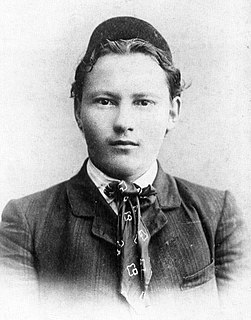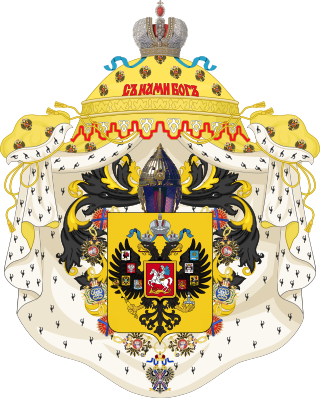Related Research Articles

Siberia is an extensive geographical region, constituting all of North Asia, from the Ural Mountains in the west to the Pacific Ocean in the east. It has been a part of Russia since the latter half of the 16th century, after the Russians conquered lands east of the Ural Mountains. Siberia is vast and sparsely populated, covering an area of over 13.1 million square kilometres (5,100,000 sq mi), but home to merely one-fifth of Russia's population. Novosibirsk, Krasnoyarsk and Omsk are the largest cities in the region.

The Volga is the longest river in Europe. Situated in Russia, it flows through Central Russia to Southern Russia and into the Caspian Sea. The Volga has a length of 3,531 km (2,194 mi), and a catchment area of 1,360,000 km2 (530,000 sq mi) which is more than twice the size of Ukraine. It is also Europe's largest river in terms of average discharge at delta – between 8,000 m3/s (280,000 cu ft/s) and 8,500 m3/s (300,000 cu ft/s) – and of drainage basin. It is widely regarded as the national river of Russia. The hypothetical old Russian state, the Rus' Khaganate, arose along the Volga c. 830 AD. Historically, the river served as an important meeting place of various Eurasian civilizations.

The Russian Far East is a region in Northeast Asia. It is the easternmost part of Russia and the Asian continent; and is administered as part of the Far Eastern Federal District, which is located between Lake Baikal in eastern Siberia and the Pacific Ocean. The area's largest city is Khabarovsk, followed by Vladivostok. The region shares land borders with the countries of Mongolia, China, and North Korea to its south, as well as maritime boundaries with Japan to its southeast, and with the United States along the Bering Strait to its northeast. The Russian Far East is often considered as a part of Siberia.

The Kalmyks are a Mongolic ethnic group living mainly in Russia, whose ancestors migrated from Dzungaria. They created the Kalmyk Khanate from 1635 to 1779 in Russia's North Caucasus territory. Today they form a majority in Kalmykia, located in the Kalmyk Steppe, on the western shore of the Caspian Sea.

The early history of Siberia was greatly influenced by the sophisticated nomadic civilizations of the Scythians (Pazyryk) on the west of the Ural Mountains and Xiongnu (Noin-Ula) on the east of the Urals, both flourishing before the Christian era. The steppes of Siberia were occupied by a succession of nomadic peoples, including the Khitan people, various Turkic peoples, and the Mongol Empire. In the Late Middle Ages, Tibetan Buddhism spread into the areas south of Lake Baikal.

The Volga Germans, Russian: поволжские немцы, romanized: povolzhskiye nemtsy) are ethnic Germans who settled and historically lived along the Volga River in the region of southeastern European Russia around Saratov and to the south. Recruited as immigrants to Russia in the 18th century, they were allowed to maintain their German culture, language, traditions and churches. In the 19th and early 20th centuries, many Volga Germans emigrated to United States, Canada, Brazil and Argentina.

Volga Bulgaria or Volga–Kama Bulgaria, was a historic Bulgar state that existed between the 7th and 13th centuries around the confluence of the Volga and Kama River, in what is now European Russia. Volga Bulgaria was a multi-ethnic state with large numbers of Turkic Bulgars, a variety of Finnic and Ugric peoples, and many East Slavs. Its strategic position of allowed it to create a monopoly between the trade of Arabs, Norse and Avars.

The Chuvash people are a Turkic ethnic group, a branch of Oghurs, native to an area stretching from the Volga-Ural region to Siberia. Most of them live in Chuvashia and the surrounding areas, although Chuvash communities may be found throughout the Russian Federation. They speak Chuvash, a unique Turkic language that diverged from other languages in the family more than a millennium ago.

Although Islam is a minority religion in Russia, Russia has the largest Muslim population in Europe. According to US Department of State in 2017, Muslims in Russia numbered 14 million or roughly 10% of the total population. According to a comprehensive survey conducted in 2012, Muslims were 6.5% of Russia's population. However, the populations of two federal subjects with Islamic majorities were not surveyed due to social unrest, which together had a population of nearly 2 million, namely Chechnya and Ingushetia, thus the total number of Muslims may be slightly larger. The Grand Mufti of Russia, Sheikh Rawil Gaynetdin, places the Muslim population of Russia at 25 million as of 2018.

Orlando Guy Figes is a British historian and writer. Until his retirement, he was Professor of History at Birkbeck College, University of London.

The Volga Tatars or simply Tatars are a Turkic ethnic group native to the Volga-Ural region of Russia. They are subdivided into various subgroups. Volga Tatars are Russia's second-largest ethnicity after the Russians. They compose 53% of the population of Tatarstan and 25% of the population of Bashkortostan. The Volga Tatars are by far the largest group amongst the Tatars.

The military history of the modern-day Russian Federation has antecedents involving Kievan Rus' and some of the Rus' principalities that succeeded it, the Mongol invasion of the early 13th century, Russia's numerous wars against Turkey, against Poland, Lithuania and Sweden, the Seven Years' War, France, and the Crimean War of 1853–1856. The 20th century saw defeat by Imperial Germany in World War I and an extremely costly victory over Nazi Germany in World War II, as well as smaller military actions against breakaway provinces and Poland. During the Cold War the greatly enlarged military suppressed rebellions in Eastern Europe and became a nuclear superpower facing off against NATO and the United States, as well as China after 1960. The post-Cold War military history of the Russian Federation itself began in 1991.

The Russian Empire was the final period of the Russian monarchy from 1721 to 1917, ruling across large parts of Eurasia. It succeeded the Tsardom of Russia following the Treaty of Nystad, which ended the Great Northern War. The rise of the Russian Empire coincided with the decline of neighbouring rival powers: the Swedish Empire, the Polish–Lithuanian Commonwealth, Qajar Iran, the Ottoman Empire, and Qing China. It also held colonies in North America between 1799 and 1867. Covering an area of approximately 22,800,000 square kilometres (8,800,000 sq mi), it remains the third-largest empire in history, surpassed only by the British Empire and the Mongol Empire; it ruled over a population of 125.6 million people per the 1897 Russian census, which was the only census carried out during the entire imperial period. Owing to its geographic extent across three continents at its peak, it featured great ethnic, linguistic, religious, and economic diversity.
The Collegium of Justice was a Russian executive body (collegium), created in the government reform of 1717. It was de-established during the decentralising reforms of Catherine II of Russia. Its first President was Andrey Matveev.

The Collegium of Foreign Affairs was a collegium of the Russian Empire responsible for foreign policy from 1717 to 1832.
Isabel Margaret de Madariaga was a British historian who specialised on Russia in the 18th century and Catherine the Great. She published six books on Russia and is credited for changing the perception of Catherine the Great amongst Russian and Western scholars. Born to a Spanish diplomat and a Scottish economic historian, she was taught at 16 schools during her childhood and earned a first-class honours degree in Russian language and literature at the School of Slavonic and East European Studies (SSEES). De Madariaga worked for BBC Monitoring in the Second World War, and was a civil servant at the Ministry of Information and HM Treasury. She held a series of part-time posts at the London School of Economics, was secretary on the editorial board of The Slavonic and East European Review, co-founded the Government and Opposition journal's editorial board and was a lecturer at the University of Sussex, Lancaster University and the SSEES.

This is a select bibliography of post World War II English language books and journal articles about the Revolutionary and Civil War era of Russian (Soviet) history. The sections "General Surveys" and "Biographies" contain books; other sections contain both books and journal articles. Book entries may have references to reviews published in English language academic journals or major newspapers when these could be considered helpful. Additional bibliographies can be found in many of the book-length works listed below; see Further Reading for several book and chapter length bibliographies. The External Links section contains entries for publicly available select bibliographies from universities.

This is a select bibliography of post-World War II English-language books and journal articles about the Early Slavs and Rus' and its borderlands until the Mongol invasions beginning in 1223. Book entries may have references to reviews published in academic journals or major newspapers when these could be considered helpful.

This is a select bibliography of post World War II English language books and journal articles about the history of Russia and its borderlands from the Mongol invasions until 1613. Book entries may have references to reviews published in academic journals or major newspapers when these could be considered helpful.

This is a select bibliography of post World War II English language books and journal articles about the history of Russia and its empire from 1613 until 1917. It specifically excludes topics related to the Russian Revolution; see Bibliography of the Russian Revolution and Civil War for information on these subjects. Book entries may have references to reviews published in academic journals or major newspapers when these could be considered helpful.
References
- ↑ Hartley, Janet. "Emeritus professor Janet Hartley". London School of Economics and Political Science. Retrieved 21 October 2022.
- ↑ "Professor Janet Hartley". Lse.ac.uk. Retrieved 19 August 2014.
- ↑ "INTERVIEW: Editor Theodora Clarke speaks to Janet Hartley, author of Siberia: A History of the People - Russian Art + Culture". Russianartandculture.com. 7 October 2014. Retrieved 14 October 2017.
- ↑ "Janet Hartley". Worldhistory.columbia.edu. Retrieved 10 December 2021.
- ↑ Marker, Gary (14 October 2017). "Review of A Social History of the Russian Empire, 1650-1825, ; The Russian Peasantry, 1600-1930: The World the Peasants Made". Social History. 26 (2): 251–253. JSTOR 4286784.
- ↑ "Potter on Hartley, 'A Social History of the Russian Empire 1650-1825' - H-Russia - H-Net". networks.h-net.org. Retrieved 14 October 2017.
- ↑ "Russia, 1762-1825". Abc-clio.com. Retrieved 14 October 2017.
- ↑ LeDonne, John P. (1 December 2008). "Russia, 1762–1825: Military Power, the State, and the People.(Studies in Military History and International Affairs.)". The American Historical Review. 113 (5): 1626–1627. doi:10.1086/ahr.113.5.1626 . Retrieved 14 October 2017.
- ↑ "Siberia". Yale University Press. Archived from the original on 21 August 2014. Retrieved 19 August 2014.
- ↑ Payne, Tom (31 July 2014). "Siberia: a History of the People by Janet M Hartley, review: 'not the most colourful account'". Telegraph.co.uk. Retrieved 14 October 2017.
- ↑ "Siberia: A History of the People by Janet M Hartley, book review: A". Independent.co.uk. 7 August 2014. Retrieved 14 October 2017.
- ↑ Bennett, Vanora (20 July 2014). "Siberia: A History of the People by Janet M Hartley". Thetimes.co.uk. Retrieved 14 October 2017.
- ↑ Abdessamad, Farah (21 February 2021). "The Volga: A History of Russia's Greatest River by Janet M Hartley". Asianreviewofbooks.com. Retrieved 10 December 2021.